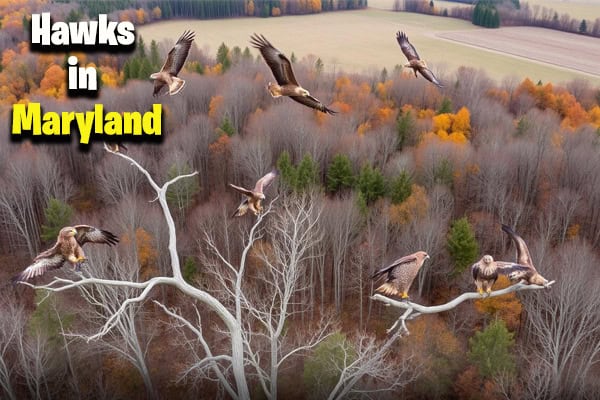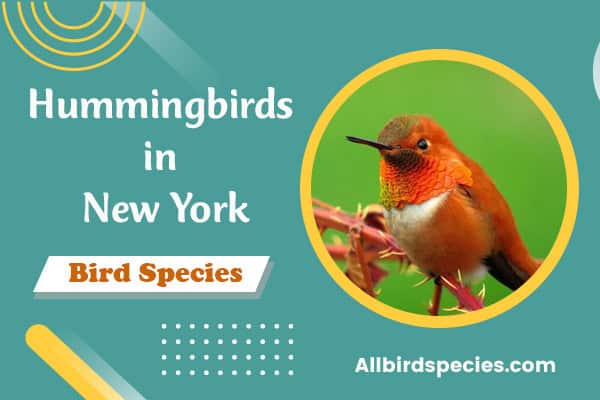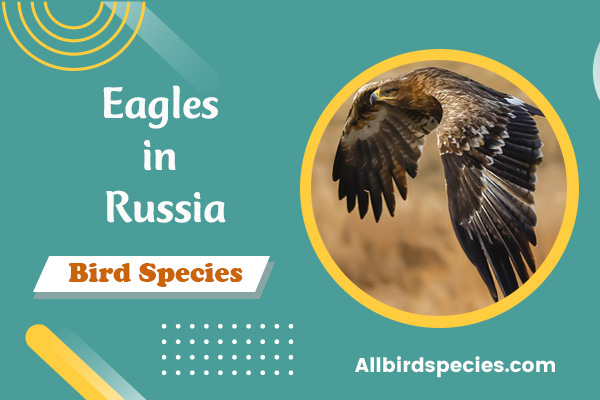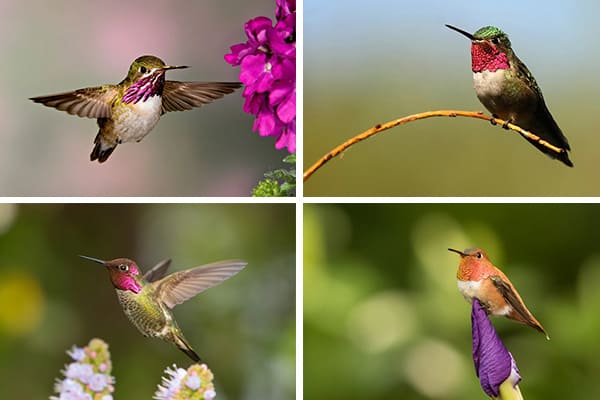8 Types of Hawks in Maryland (With Pictures)
Did you know Maryland is home to over 30 species of birds of prey, including hawks? These birds are not just fascinating to watch; they also play a key role in our ecosystems. We’ll look at eight types of hawks found in Maryland, with pictures to help identify them and improve our birdwatching.
This guide aims to be useful for both experienced birdwatchers and beginners. We’ll explore the unique traits and behaviors of these birds. Join us to learn about the world of hawks and their important roles in Maryland’s ecosystem.
Common Hawks Found in Maryland
- Red-Tailed Hawk
- Cooper’s Hawk
- Sharp-Shinned Hawk
- Broad-Winged Hawk
- Rough-legged Hawk
- Northern Goshawk
- Northern Harrier
- Red-Shouldered Hawk
1. Red-Tailed Hawk
- Scientific name: Buteo jamaicensis
- Life span: 10-15 years
- Size: (50-65 cm)
- Weight: (900-1460 g)
- Wingspan: (114-133 cm)
The Red-Tailed Hawk, known scientifically as Buteo jamaicensis, is a well-known bird in North America. Its bright red tail feathers make it easy to spot. In Maryland, we often see these birds flying over open fields or sitting high in trees, looking around with sharp eyes.

These hawks in md live in many different places, showing how adaptable they are. They have strong bodies that help them catch small mammals and birds for food. Seeing a Red-Tailed Hawk in our area is always exciting.
Red-tailed hawks have interesting ways of nesting. They like to nest in high places where they can see everything around them. Often, they use buildings and telephone poles in cities for their nests. Watching them during nesting season teaches us about their social life and daily habits.
In short, the Red-Tailed Hawk is a symbol of strength and beauty in Maryland’s skies. Whether they’re flying high or nesting in the city, these birds always leave us in awe.
2. Cooper’s Hawk
- Scientific name: Accipiter cooperii
- Life span: 12 years
- Size: (37-39 cm)
- Weight: (220-410 g)
- Wingspan: (62-90 cm)
The Cooper’s Hawk Species in Maryland, known scientifically as Accipiter cooperii, is a bird that moves with great agility and hunts smaller birds with skill. They live in wooded areas of Maryland and show off their hunting skills. Their bodies are compact, and their long tails help them fly through dense trees to catch their prey.

Cooper’s Hawks are very particular about where they nest. They choose tall trees that are hard to see from the ground. This keeps their babies safe from danger. Their nests blend into the leaves, making them hard to find. This shows how they work hard to protect their young.
| Characteristic | Description |
|---|---|
| Scientific Name | Accipiter cooperii |
| Size | 14 to 20 inches in length |
| Wingspan | 28 to 36 inches |
| Weight | 8 to 20 ounces |
| Main Prey | Small birds (e.g., sparrows, finches) |
| Nesting Preference | Tall trees in wooded areas |
Learning about the Cooper’s Hawk helps us see how diverse Maryland’s birds are. Their ability to adapt shows how strong nature can be.
3. Sharp-Shinned Hawk
- Scientific name: Accipiter striatus
- Life span: 5 years
- Size: (24-34 cm)
- Weight: (87-218 g)
- Wingspan: (43-56 cm)
The Sharp-Shinned Hawks, known as Accipiter striatus, is the smallest hawk in Maryland. It is known for its speed and agility, making it a great hunter of small songbirds. You can identify it by its slate-grey back and finely barred underparts, which look striking in the trees.

These hawks are key to keeping their environment balanced. They live in dense woods, staying hidden as they hunt. Their nests are high up, made of twigs and leaves, which keeps them safe from threats.
Learning about the Sharp-Shinned Hawk’s habitat and looks helps us appreciate this small but powerful bird. Here are some important facts about this species:
| Attribute | Description |
|---|---|
| Size | Approximately 10-14 inches in length |
| Wingspan | 20-24 inches |
| Weight | 4-8 ounces |
| Coloration | Slate-grey back; finely barred underparts |
| Prey | Mainly small birds |
Understanding the importance of preserving their habitat helps us protect the Sharp-Shinned Hawk and other birds. Their presence adds value to our ecosystem. It shows us why it’s crucial to keep their natural homes safe.
Hawks in other Regions:
4. Broad-Winged Hawk
- Scientific name: Buteo platypterus
- Life span: 12 years
- Size: (34-44 cm)
- Weight: (265-560 g)
- Wingspan: (81-100 cm)
The Broad-Winged Hawk, known as Buteo platypterus, is a favorite among bird lovers. It’s known for its eye-catching look and unique sounds. These hawks pass through Maryland, adding beauty to our forests during their migration.
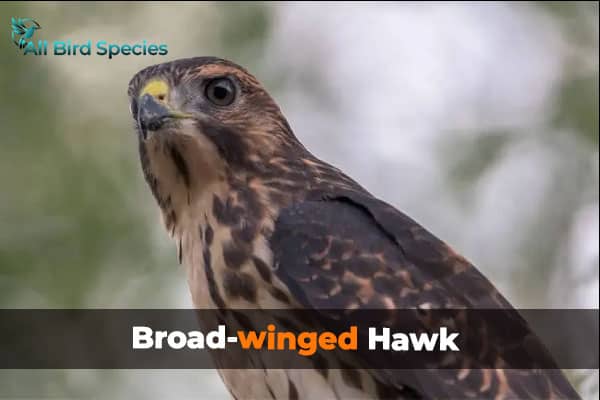
They often fly in big groups, showing off their strong migration patterns. It’s a sight to see these hawks moving together in the sky.
These birds love living in forests, making them easy to spot in wooded areas. They are skilled hunters, mainly eating small mammals and reptiles. This flexibility in their diet helps them survive in different places.
Broad-winged hawks also have interesting ways of nesting. They pick strong branches high up in trees for their nests. This keeps their babies safe. Efforts to protect their migration routes are key to keeping their numbers up, so we can continue to enjoy their company.
| Characteristic | Details |
|---|---|
| Scientific Name | Buteo platypterus |
| Habitat | Forested areas |
| Diet | Small mammals and reptiles |
| Nesting | Sturdy branches in trees |
| Migration | Highly migratory, seen in large flocks |
5. Rough-legged Hawk
- Scientific name: Buteo lagopus
- Life span: Up to 15 years
- Size: (46-51 cm)
- Weight: (680-1470g)
- Wingspan: (132-137 cm)
The Rough-Legged Hawk, known as Buteo lagopus, is a winter visitor to Maryland. It comes from northern areas but visits our state when it’s cold. Its feathers cover its legs, helping it survive the cold.
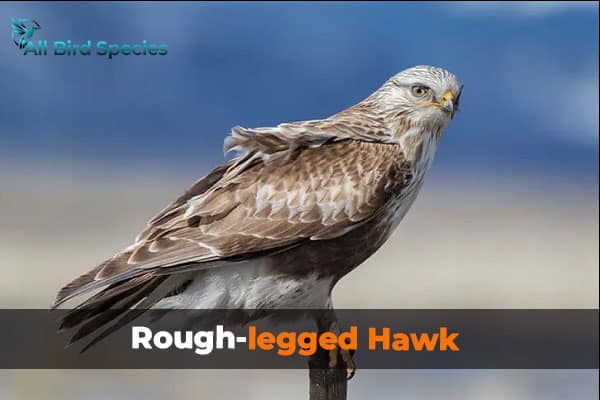
In Maryland, these hawks hunt small mammals like voles. They can hover in the air to find their food. This makes them great hunters. It’s interesting to learn about their nesting habits, as they live in the Arctic and subarctic.
To learn more about the Rough-Legged Hawk, let’s look at these points:
- Migration Patterns: These hawks travel a long way to get to Maryland from their homes as winter comes.
- Hunting Techniques: They are very agile and can hover to find food from far away.
- Conservation Status: We need to keep an eye on their numbers so they can keep visiting our area.
Appreciating the Rough-Legged Hawk helps us see its importance in our ecosystem, especially in winter. They add to the area’s biodiversity and make wildlife lovers happy.
Hawks in Maryland: Rare and Migratory Species
6. Northern Goshawk
- Scientific name: Accipiter gentilis
- Life span: Up to 15 years
- Size: (61-74 cm)
- Weight: (680-1360g)
- Wingspan: (114-132 cm)
The Northern Goshawk is a formidable raptor native to the Northern Hemisphere, including North America, Europe, and Asia. With a robust build and striking red eyes, these birds feature a slate-grey back, pale underparts marked with fine bars, and a distinctive white eyebrow stripe.

Renowned for their exceptional hunting prowess, Goshawks primarily target birds and mammals within dense forests. Their powerful flight and sharp talons establish them as apex predators in their habitats.
A Northern Goshawk in flight Northern Goshawks are also impressive nest builders, creating large, sturdy nests high in coniferous trees in northern regions of North America. They construct these nests with remarkable precision, using sticks and foliage to blend seamlessly with their surroundings and provide an unobstructed view of their hunting territory.
Related Video:
| Species | Migration Period | Conservation Status |
|---|---|---|
| Northern Goshawk | Winter | Concerned |
| Swainson’s Hawk | Spring/Fall | Not Listed |
| Bald Eagle | Year-Round | Recovered |
7. Northern Harrier
- Scientific name: Circus hudsonius
- Life span: Up to 12 years
- Size: (45-50 cm)
- Weight: (350-740 g)
- Wingspan: (100-122 cm)
The Northern Harrier is a graceful raptor found across North America, Europe, and Asia. Notable for their long wings and owl-like facial disk, these harriers are easily identified by their white rump and slender, brown-streaked bodies.

Distinct from many raptors, Northern Harriers employ a low, hovering flight pattern while hunting rodents and small mammals in marshlands and open fields. Their sharp eyesight and agility make them highly effective hunters in these environments.
A Northern Harrier in flight over a meadow In Maryland, Northern Harriers build their nests in open fields and marshlands, creating shallow nests directly on the ground, often hidden among tall grasses. This nesting strategy allows them to keep a close watch over their hunting grounds while raising their young.
Their diet mainly consists of rodents and small birds, including voles, mice, and marsh birds. Their low, mesmerizing flight and exceptional vision enable them to navigate challenging terrains with precision.
You can find hawks in Maryland at:
- Patuxent Research Refuge (Laurel)
- Blackwater National Wildlife Refuge (Cambridge)
- Catoctin Mountain Park (Thurmont)
- Assateague Island National Seashore (Berlin)
These areas, along with migratory paths like the Appalachian Mountains, are great for hawk-watching, especially during migration seasons.
Check Our Previous Articles:
Conclusion
As we wrap up our look at Maryland’s hawk species, we hope you’ve grown to love these amazing birds more. From the common Red-Tailed Hawk to the rare Rough-Legged Hawk, each plays a key role in our ecosystem. Seeing these birds up close can deepen our connection to nature and show us why conservation matters.
Every time we see a hawk, it makes us think about protecting them and their homes in Maryland. By caring for these raptors, we can help ensure future generations will enjoy watching them too. Even small actions can greatly help the health of their populations and our environment.

